Avoiding the Health Hazard of People from Construction Vehicles: A Strategy for Controlling the Vibration of a Wheel Loader
Abstract
:1. Introduction
2. Vibration Transmission of the Seat Vibration for Wheel Loader
2.1. Engine Vibration
2.2. Tire/Road Vibration
2.3. Other Vibration
3. Cab Seat Vibration Test and Order Analysis
3.1. Cab Seat Vibration Test
3.1.1. Test Condition
3.1.2. Sensors Arrangement and Data Collection
3.2. Order Tracking Analysis
3.3. Results and Discussion
3.3.1. Test Results
3.3.2. Transmission Path Analyses
3.3.3. Vibration Reduction Theories
3.3.4. Validation Tests
4. Conclusions
Acknowledgments
Author Contributions
Conflicts of Interest
References
- Wu, J.D.; Chen, R.J. Application of an active controller for reducing small-amplitude vertical vibration in a vehicle seat. J. Sound Vib. 2004, 274, 939–951. [Google Scholar] [CrossRef]
- Langer, T.H.; Iversen, T.K.; Andersen, N.K.; Mouritsen, O.Ø.; Hansen, M.R. Reducing whole-body vibration exposure in backhoe loaders by education of operators. Int. J. Ind. Ergon. 2012, 42, 304–311. [Google Scholar] [CrossRef] [Green Version]
- Blood, R.P.; Rynell, P.W.; Johnson, P.W. Whole-body vibration in heavy equipment operators of a front-end loader: Role of task exposure and tire configuration with and without traction chains. J. Saf. Res. 2012, 43, 357–364. [Google Scholar] [CrossRef] [PubMed]
- Zhao, X.; Schindler, C. Evaluation of whole-body vibration exposure experienced by operators of a compact wheel loader according to ISO 2631-1:1997 and ISO 2631-5:2004. Int. J. Ind. Ergon. 2014, 44, 840–850. [Google Scholar] [CrossRef]
- Roseiro, L.M.; Neto, M.A.; Amaro, A.M.; Alcobia, C.J.; Paulino, M.F. Hand-arm and whole-body vibrations induced in cross motorcycle and bicycle drivers. Int. J. Ind. Ergon. 2016, 56, 150–160. [Google Scholar] [CrossRef]
- Kuijt-Eversa, L.F.M.; Krause, F.; Vink, P. Aspects to improve cabin comfort of wheel loaders and excavators according to operators. Appl. Ergon. 2003, 34, 265–271. [Google Scholar] [CrossRef]
- Cvetanovic, B.; Zlatkovic, D. Evaluation of whole-body vibration risk in agricultural tractor drivers. Bulg. J. Agric. Sci. 2013, 19, 1155–1160. [Google Scholar]
- Bovenzi, M.; Hulshof, C.T.J. An updated review of epidemiological studies on the relationship between exposure to whole-body vibration and low back pain. J. Sound Vib. 1998, 215, 595–611. [Google Scholar] [CrossRef]
- Bovenzi, M. Low back pain disorders and exposure to whole body vibration in the workplace. Semin. Perinatol. 1996, 20, 38–53. [Google Scholar] [CrossRef]
- Koradecka, D. Handbook of Occupational Safety and Health; CRC Press: Boca Raton, FL, USA, 2010. [Google Scholar]
- British Standards Institution. Guide to Measurement and Evaluation of Human Exposure to Whole-Body Mechanical Vibration and Repeated Shock. Available online: http://shop.bsigroup.com/ProductDetail/?pid=000000000000171912 (accessed on 9 September 2016).
- Wu, J.-D.; Chen, J.-C. Continuous wavelet transform technique for fault signal diagnosis of internal combustion engines. NDT E Int. 2006, 39, 304–311. [Google Scholar] [CrossRef]
- Tse, P.W.; Yang, W.X.; Tam, H.Y. Machine fault diagnosis through an effective exact wavelet analysis. J. Sound Vib. 2004, 277, 1005–1024. [Google Scholar] [CrossRef]
- Bai, M.R.; Jeng, J.; Chen, C. Adaptive order tracking technique using recursive least-square algorithm. J. Vib. Acoust. 2002, 124, 502–511. [Google Scholar] [CrossRef]
- Cheng, J.S.; Zhang, K.; Yang, Y. An order tracking technique for the gear fault diagnosis using local mean decomposition method. Mech. Mach. Theory 2012, 55, 67–76. [Google Scholar] [CrossRef]
- Zhou, J.; Huang, P.L.; Zhu, Y.G.; Deng, J.X. A quality evaluation model of reuse parts and its management system development for end-of-life wheel loaders. J. Clean. Prod. 2012, 35, 239–249. [Google Scholar] [CrossRef]
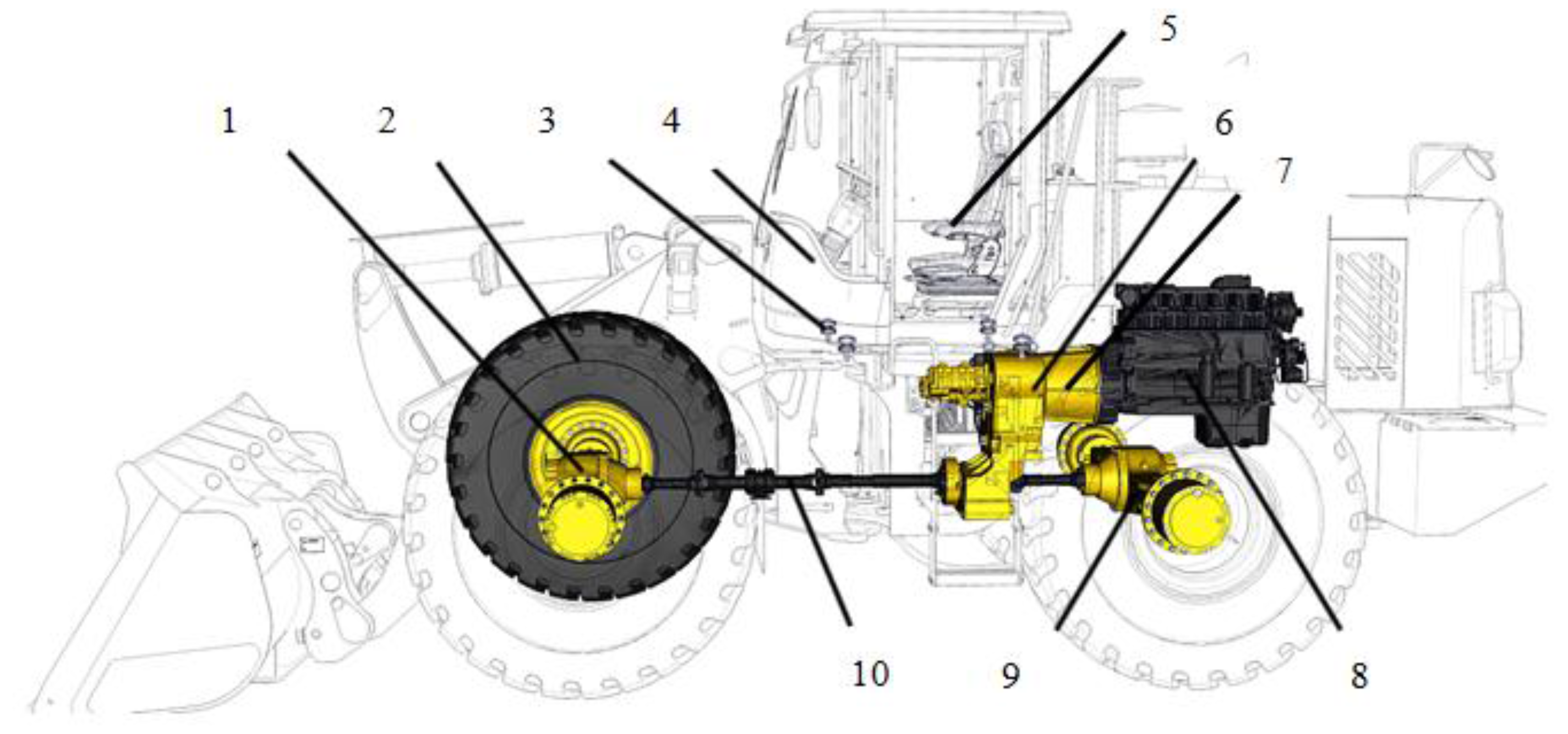
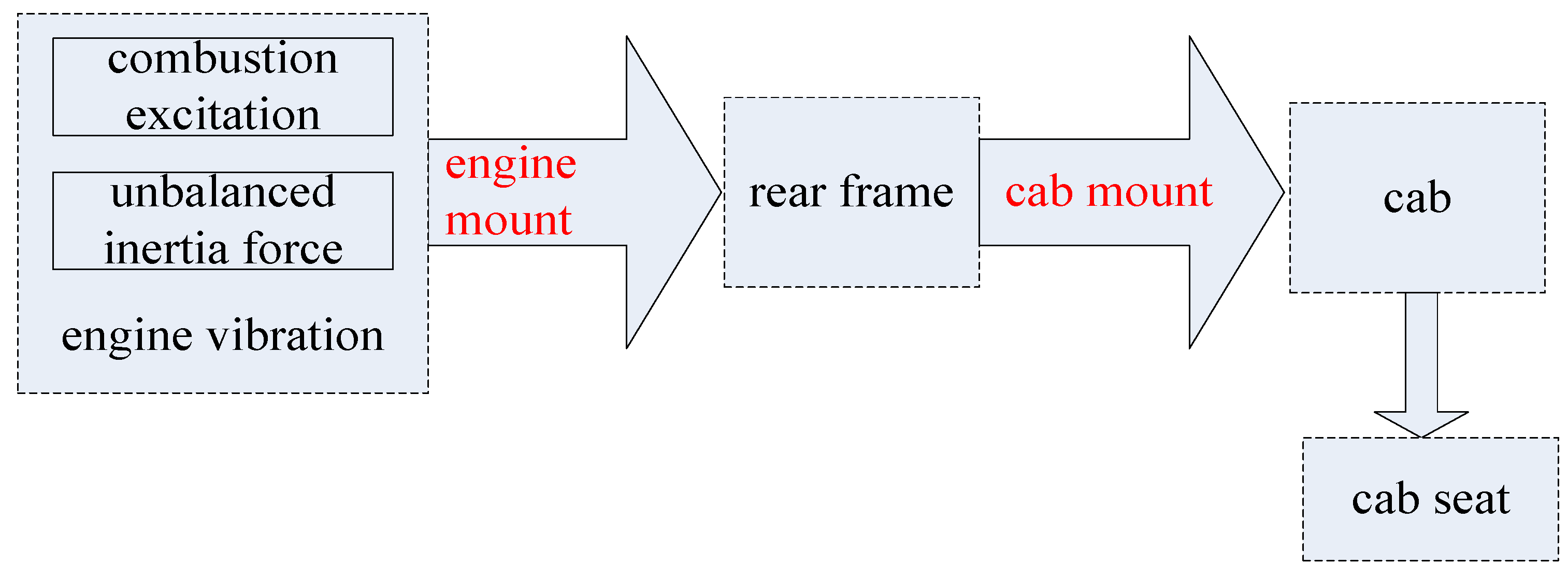
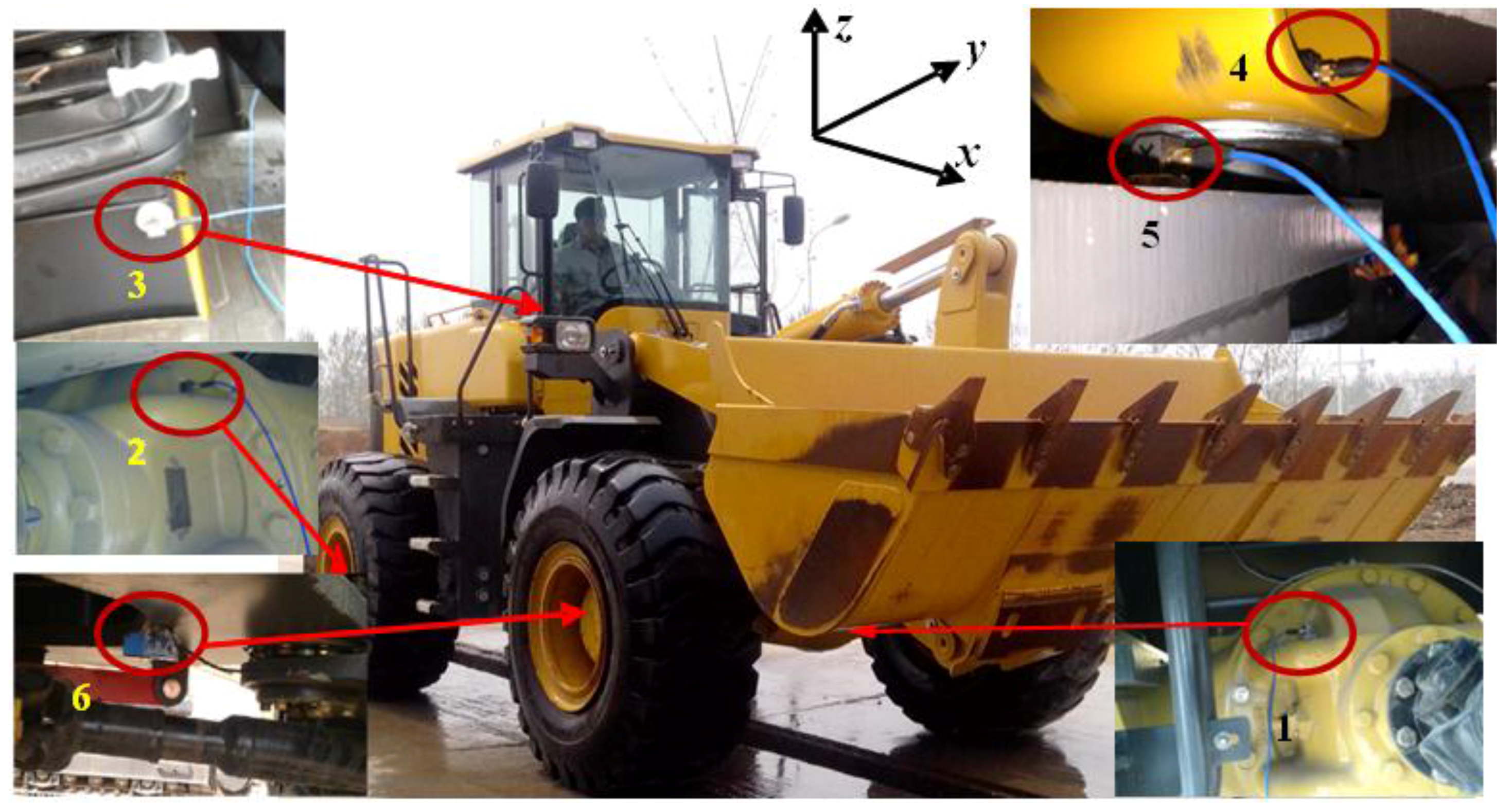
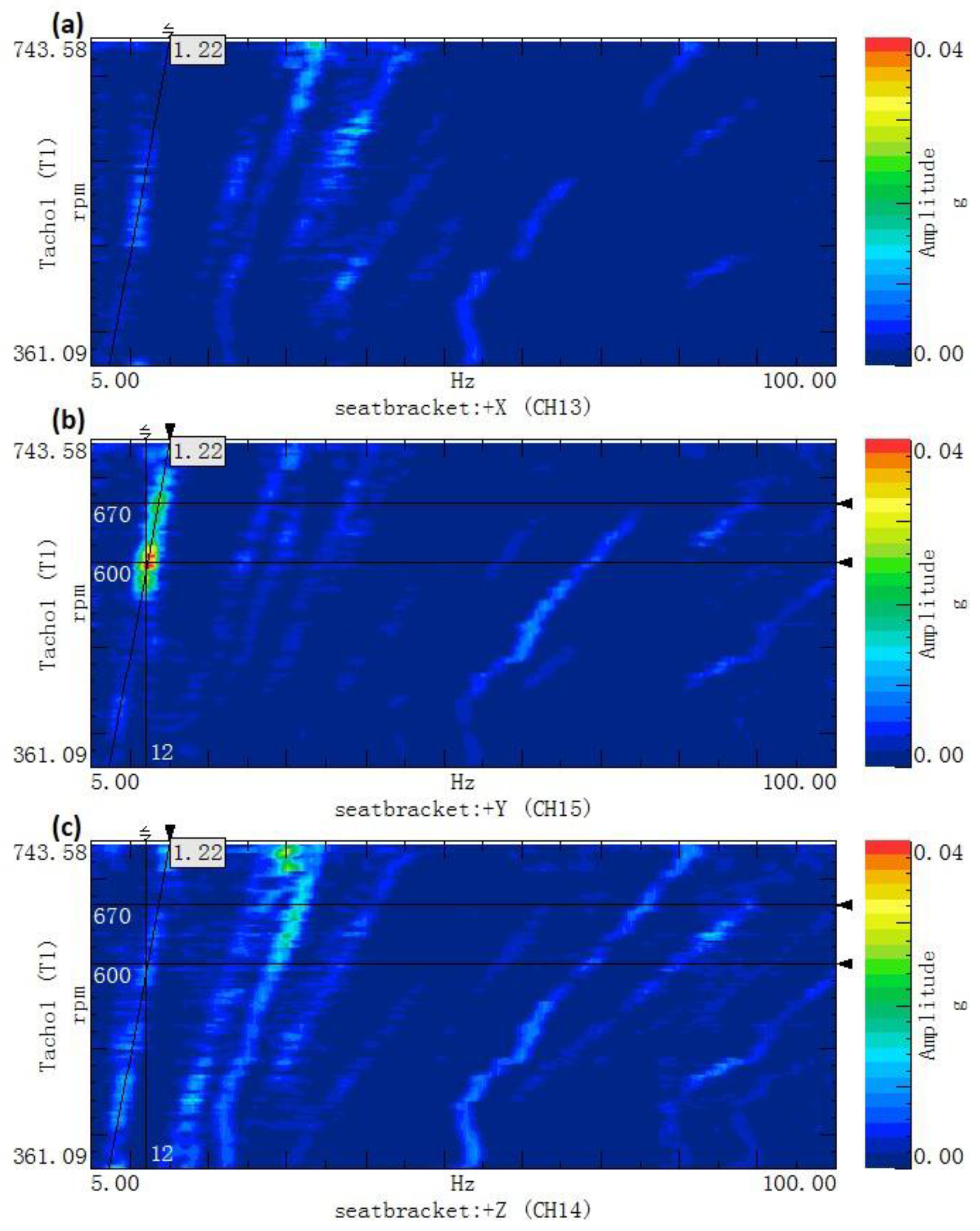
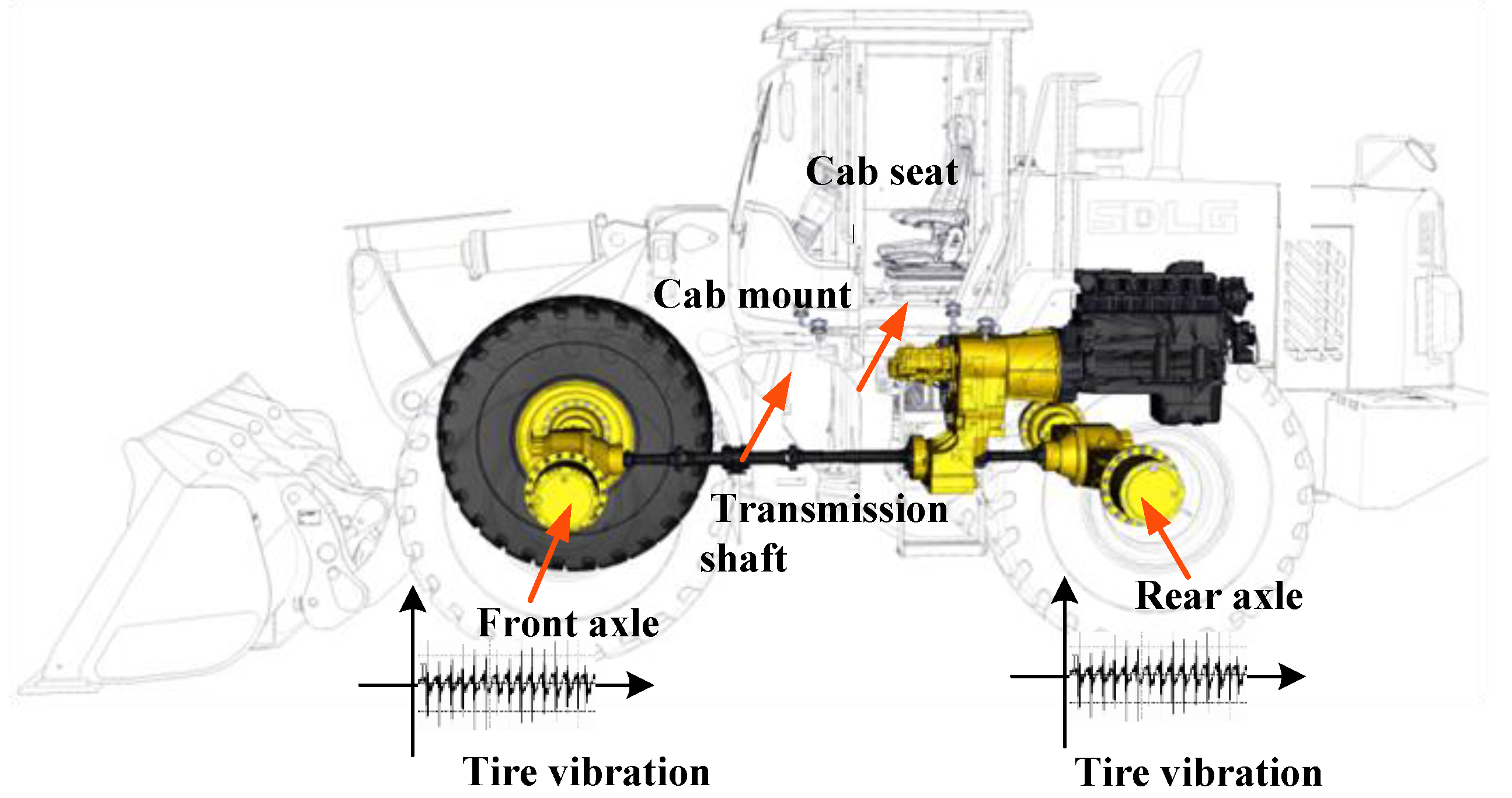
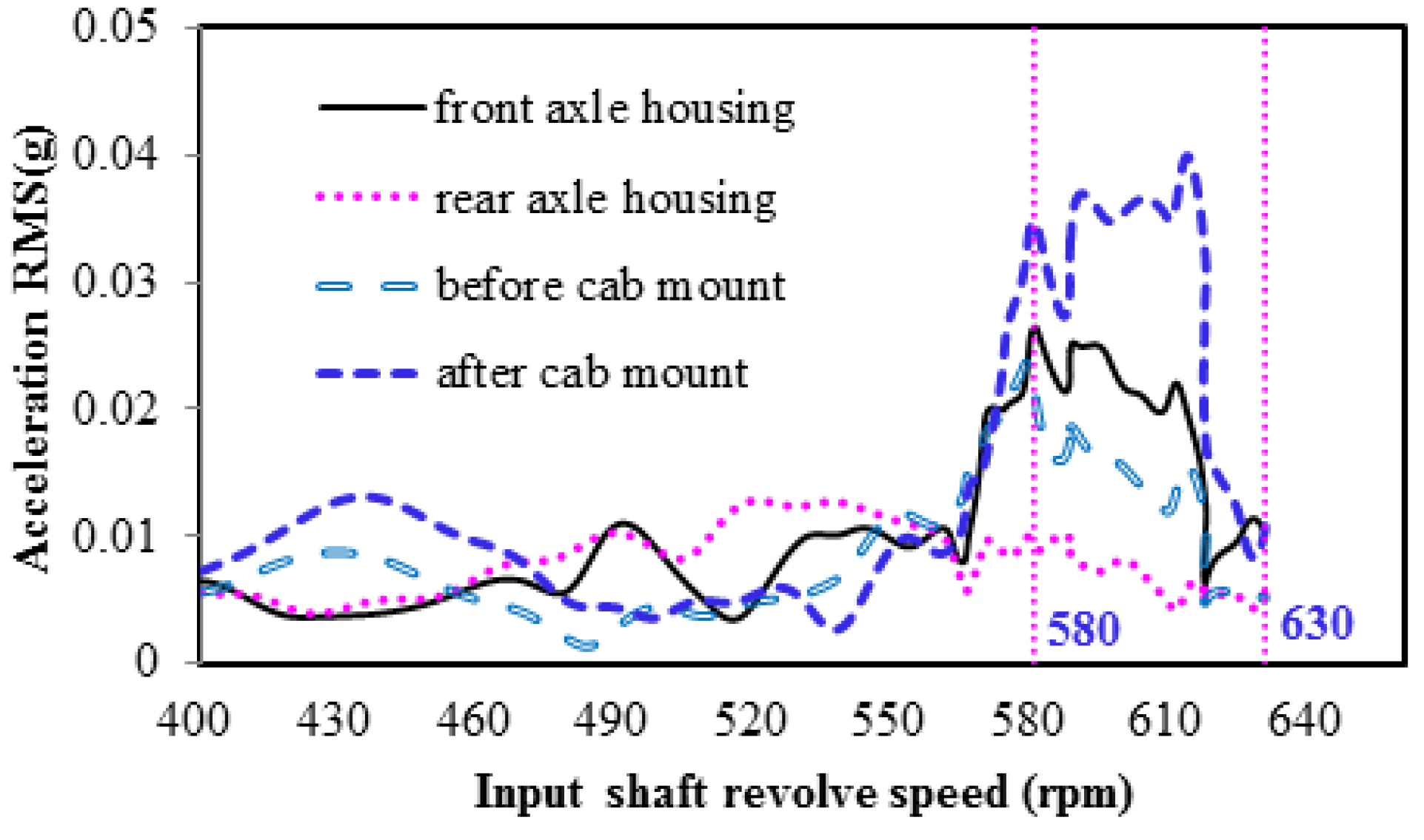
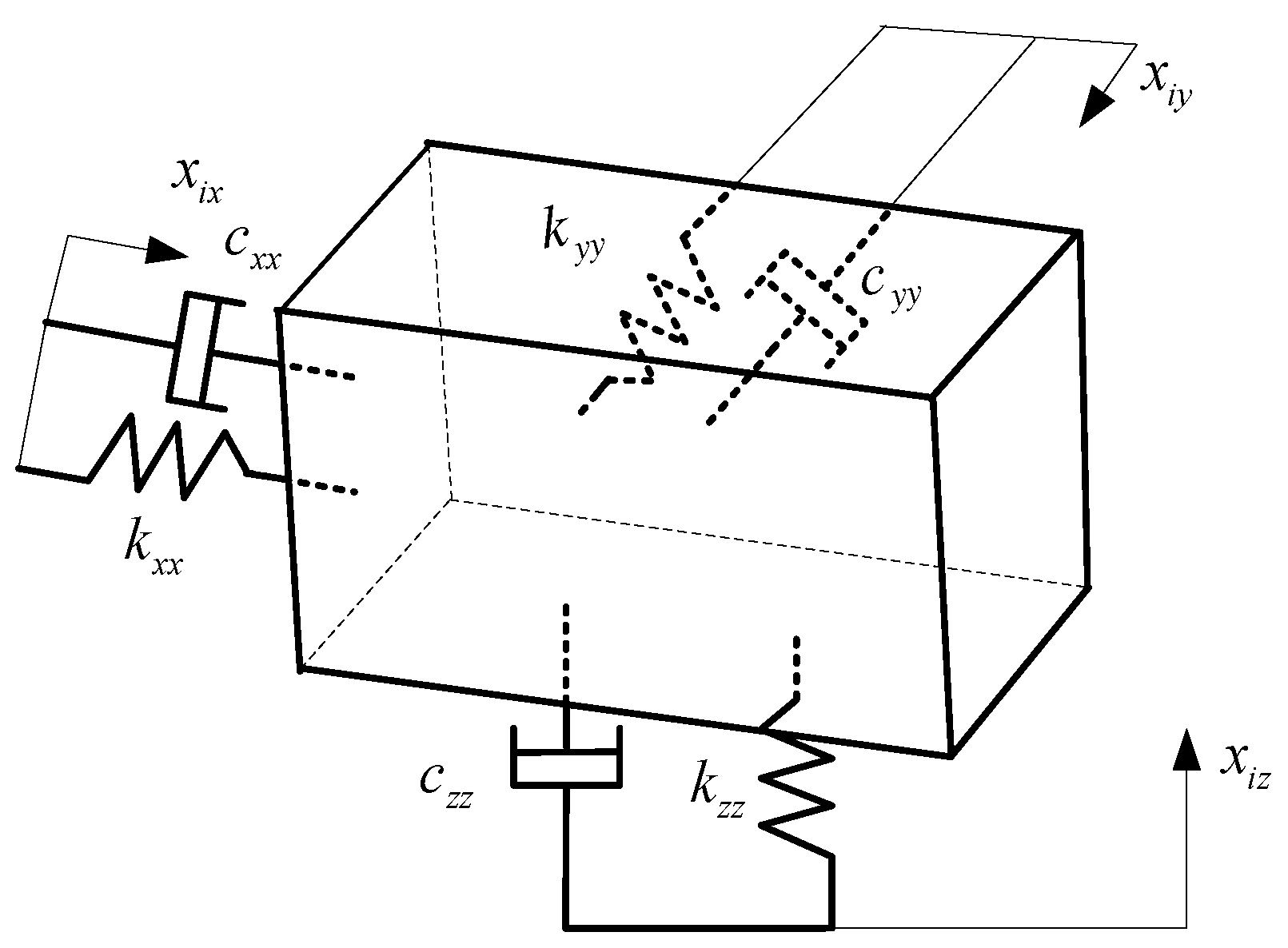
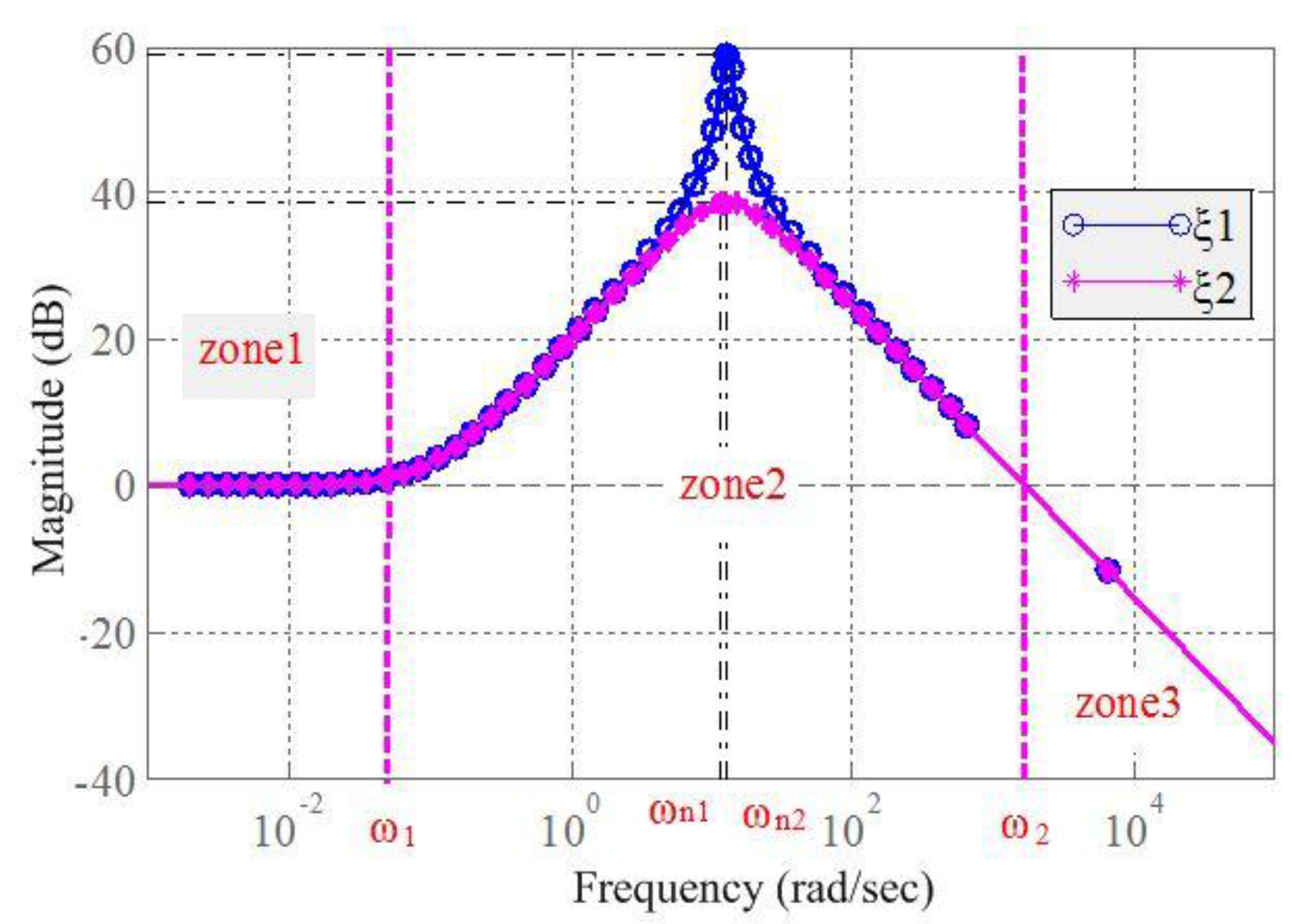
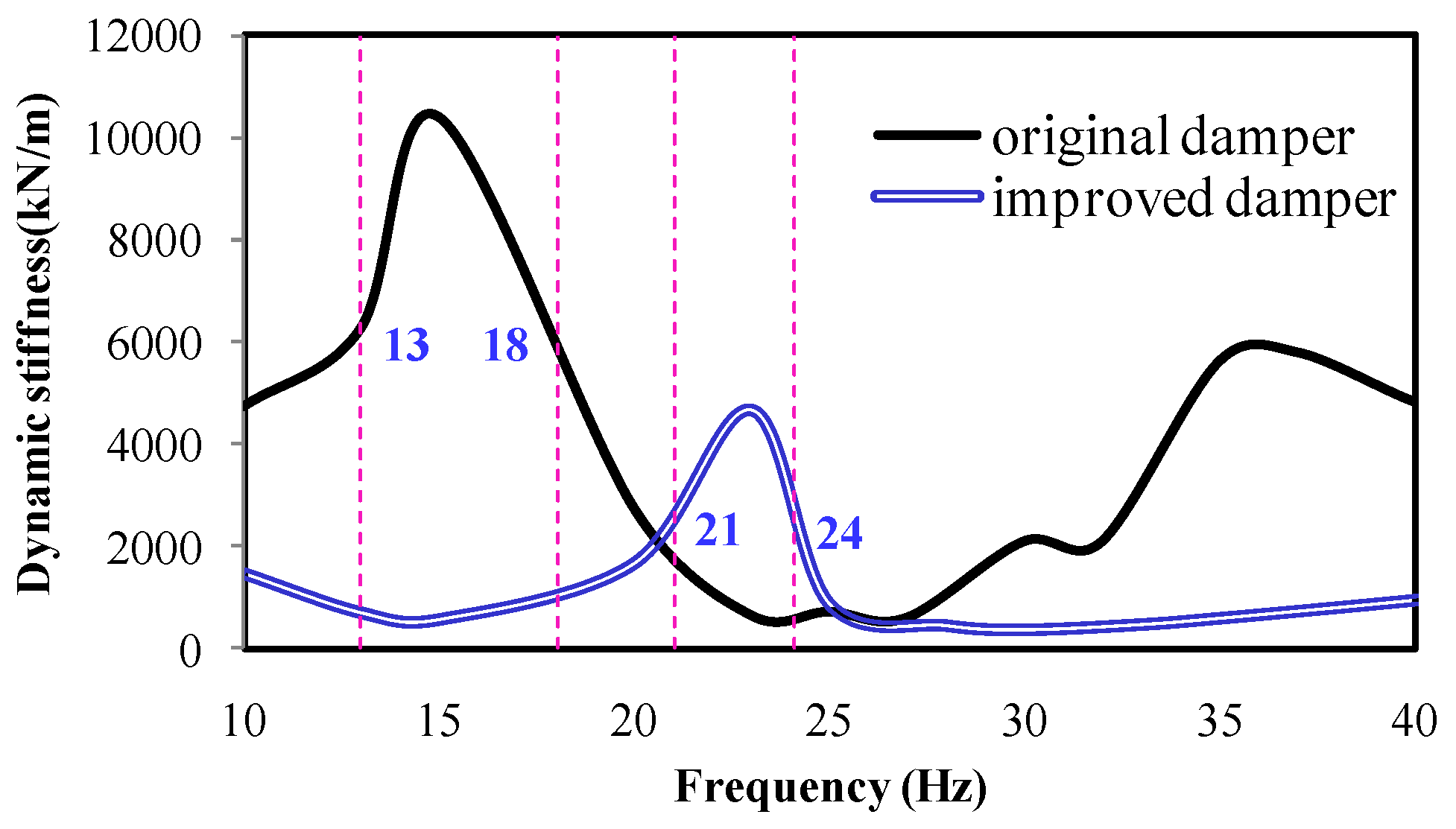
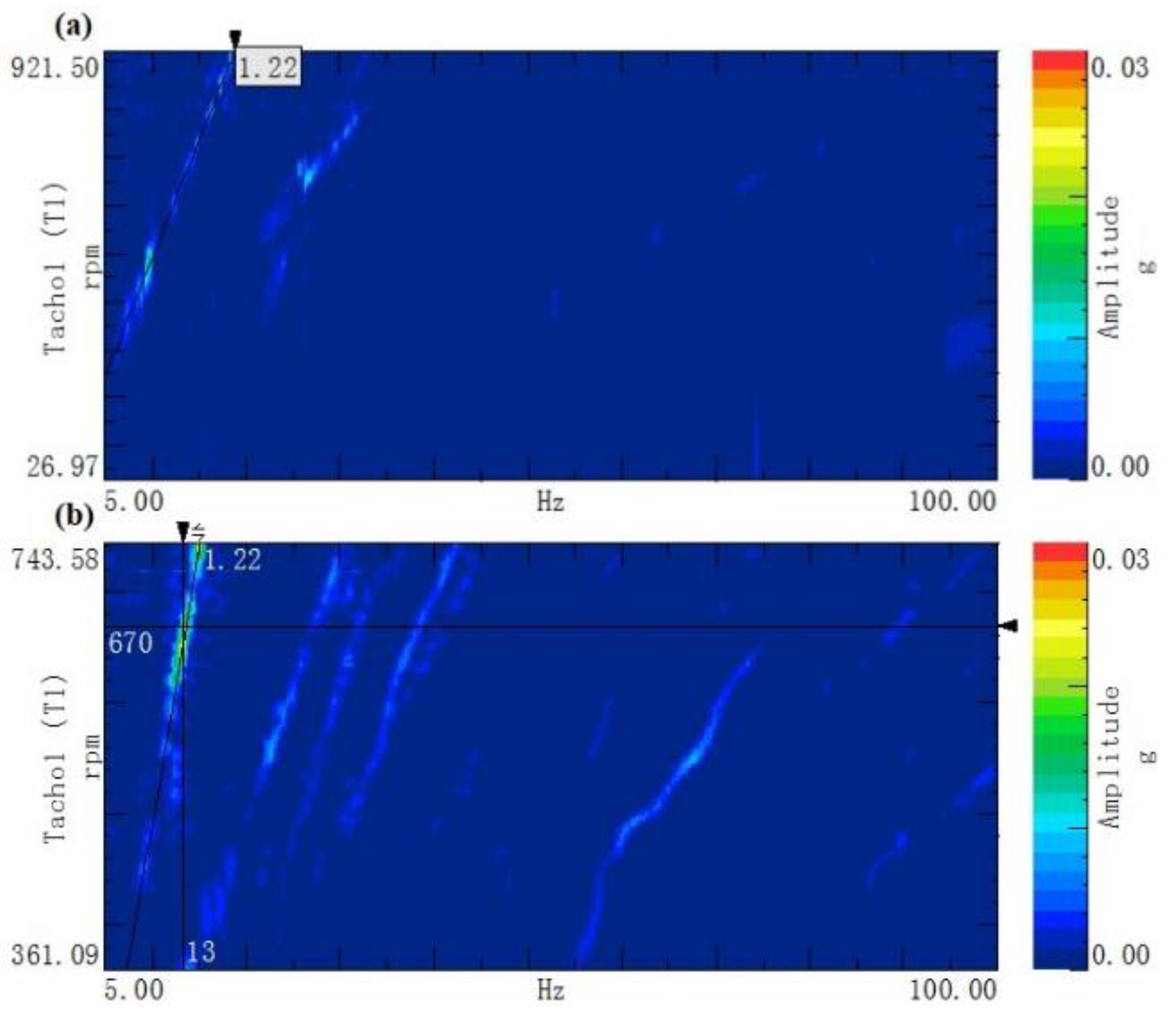
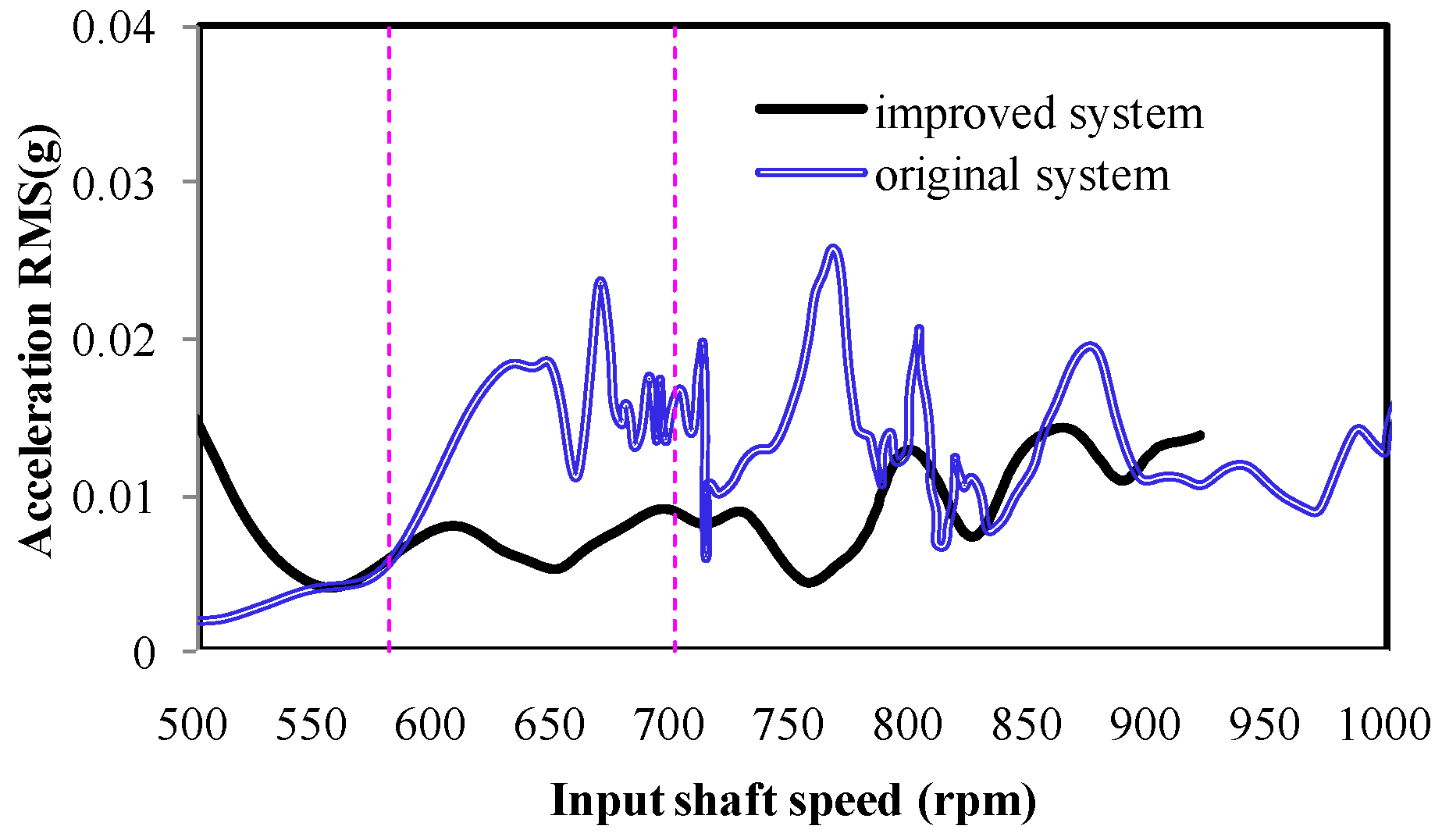
| Excitation Source | Rotational Speed (rpm) | Frequency (Hz) | Order |
|---|---|---|---|
| Front axle input shaft | n | n/60 | 1 |
| Driving axle output | n/22.85 | n/22.85/60 | 1/22.85 |
| Tire thread | n/22.85/60 × 28 | 1.225 |
© 2017 by the authors. Licensee MDPI, Basel, Switzerland. This article is an open access article distributed under the terms and conditions of the Creative Commons Attribution (CC BY) license ( http://creativecommons.org/licenses/by/4.0/).
Share and Cite
Chi, F.; Zhou, J.; Zhang, Q.; Wang, Y.; Huang, P. Avoiding the Health Hazard of People from Construction Vehicles: A Strategy for Controlling the Vibration of a Wheel Loader. Int. J. Environ. Res. Public Health 2017, 14, 275. https://doi.org/10.3390/ijerph14030275
Chi F, Zhou J, Zhang Q, Wang Y, Huang P. Avoiding the Health Hazard of People from Construction Vehicles: A Strategy for Controlling the Vibration of a Wheel Loader. International Journal of Environmental Research and Public Health. 2017; 14(3):275. https://doi.org/10.3390/ijerph14030275
Chicago/Turabian StyleChi, Feng, Jun Zhou, Qi Zhang, Yong Wang, and Panling Huang. 2017. "Avoiding the Health Hazard of People from Construction Vehicles: A Strategy for Controlling the Vibration of a Wheel Loader" International Journal of Environmental Research and Public Health 14, no. 3: 275. https://doi.org/10.3390/ijerph14030275





